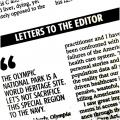
It’s now three weeks since you published news of Watford Borough Council’s draft proposals to reshape the town centre and to relocate the council’s functions away from the town hall, time enough for first impressions to be formed. Predictably, the greater number of comments relate to the possible effect on traffic; the proposal to fill in the road tunnel and pedestrian subway from The Parade is unwelcome to some. But four decades on, this pedestrian underground passage remains a horror to users on foot and cycle, and forms a physical and psychological barrier. We’ve lost two foot tunnels under Beechen Grove recently; does anyone miss them? Foot tunnels are an invitation to muggers (and to the incontinent) – far better bring everyone above ground. It’s said another pedestrian crossing will impede the flow of traffic –yet there are at least ten controlled foot crossings in Rickmansworth and St Albans Roads within half a mile of the town hall. Would another one really make a significant difference? Pedestrians are just as much entitled to consideration as are motorists. So the council deserves credit there.
READ MORE: Bold plans to reshape Watford town centre
But the most significant and far-reaching proposal is that the council should decamp from the town hall. To that, there’s not been a word of opposition. The only possible criticism is that this step should have been taken a couple of decades ago, at a time when the possibilities of new technology were first becoming apparent and the need for local authorities to move with the times were plain. Still, better late than never. Another pat on the back for the council, then.
We’re told, though, that the council will keep the use of the council chamber and committee rooms in the ‘old’ town hall, while building themselves a new modern building at an unidentified location. Uh, uh! That’s a recipe for trouble if ever there was one! Anyone who has experience of an organisation operating from two hubs knows that a) the person you want is in the other building b) your file doesn’t seem to be in either, and c) claims for travelling expenses will go through the roof. It makes obvious sense that the council should have a small physical presence in the town centre with a visitor information centre where the council can have a ‘shop window’ for us and our visitors. This can include virtual interview rooms where members of the public can speak to and see the officer they need for advice. But Watford Council doesn’t need a new building for this; officers can have access to a screen and online files wherever they can be most efficiently and productively located. After all, when we phone or ‘chat’ to our banks, building societies, insurance companies etc we are not surprised to be speaking with someone in Asia, Africa, even Scotland. Why should contact with a local authority be any different? Bearing in mind that many local authority functions are now shared between other authorities, or are outsourced, the scope for financial economy is unlimited. So, please, not a new multimillion pound town hall: there are plenty of premises on our business parks where you can be just as effective without raiding the council’s reserves.
With the council now prepared to consider the physical shape of future Watford, would not a look at the town’s administrative framework also be timely? Watford continues to be effectively controlled by Hertfordshire County Council who call all the shots in relation to the major services we use; public health, education, highways, transport, libraries are all run from Hertford, 35 miles away. Why cannot Watford take control of these services? The answer is, of course, that Watford remains administratively a non-metropolitan borough, as it has been since the last major local government shake-up in the 1970s. Yet the face of Watford, as well as its economic strength, has changed out of all recognition since then. Like it or not, it is London, not Hertfordshire, that now exercises all the economic and social gravitational pull on our town. The idea of Watford being a legal entity within London is a red line for some, but sentiment should be no substitute for reality. The arguments in favour of linking our future with London’s become stronger year by year. Is it time for the Mayor and his council to lead from the front and think the unthinkable? And perhaps we’ll once again be saying ‘they should’ve done it years ago’.
Anthony Bramley-Harker
Hibbert Avenue, Watford



Comments: Our rules
We want our comments to be a lively and valuable part of our community - a place where readers can debate and engage with the most important local issues. The ability to comment on our stories is a privilege, not a right, however, and that privilege may be withdrawn if it is abused or misused.
Please report any comments that break our rules.
Read the rules hereLast Updated:
Report this comment Cancel